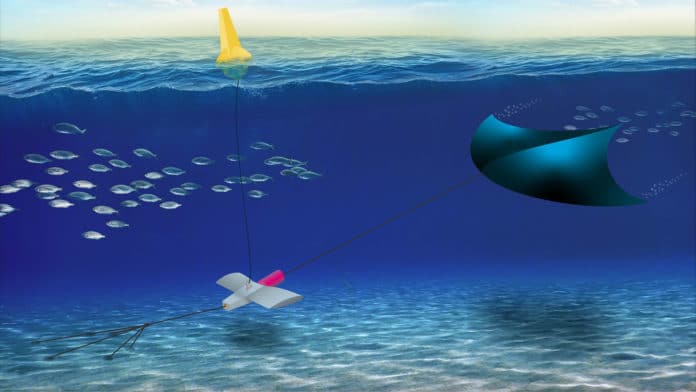While energy conservation is important, it is clear that as global industrialization accelerates, energy needs will increase in the near future.
Scientists at the California-based SRI International research institute are committed to helping the world meet its energy needs in innovative ways. The institute recently received a three-year, $4.2 million award from the U.S. Department of Energy’s ARPA-E (the Advanced Research Projects Agency-Energy), as a part of its SHARKS (Submarine Hydrokinetic And Riverine Kilo-megawatt Systems) program.
In collaboration with the University of California, Berkeley, SRI will use the award to refine and demonstrate the Manta concept. Manta’s underwater kite system will harness the incredible power of ocean tides and rivers. It will generate power using an underwater kite to capture the power of water currents, similar to an airborne kite that is lifted by the wind.
SRI’s Manta system relies on a relatively simple, manta-shaped kite made out of simple materials like a relatively lightweight and low-cost polymer composite-coated foam and fiberglass. The kite is attached via a tether to a generator, which is anchored to the floor of the ocean or a river in an area where there are strong currents. The tether reel is equipped with both an electric motor and a generator.
The payout of the kite spins a generator that creates electricity from tidal flows that can be stored in a battery or fed directly into the grid. The same generator acts as a motor to reel the kite back in with little effort when the kite is pointed at the generator. The reel-in phase does require some energy, but not nearly as much as the system generates. SRI is aiming for an average output of about 20 kW per kite, which is enough to power a dozen homes.
The kite system is sized to be easily serviceable by one or two people with readily available watercraft. The kite motion can also easily adjust to seasonal or sudden changes in flow to avoid storms, watercraft, or animals. Unlike spinning rotors, kites pose less of a threat to sea creatures.
Also, compared to systems that require rigidly anchored rotary turbines, the Manta underwater kite system is claimed to be significantly cheaper and easier to install. The centerpiece of the system, the underwater kite, can simply be reeled when there is a chance it could interfere with nearby human activities or wildlife. However, the designers say the lightness of the kite shouldn’t present much of a hazard even when it is in motion.
SRI’s goal is to enable this technology to achieve commercial use by demonstrating a site-adaptable kite-energy system. Through Manta, SRI will showcase the viability of a system that produces low LCOE (levelized cost of energy) through the efficient generation of electricity from rivers and tides.
